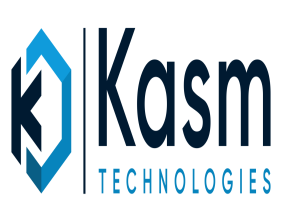Summary
- A million newly self-employed and freelancer escape the safety net of CJRS and SEIS schemes
- MPs call on Rishi Sunak to include them before these schemes come to an end
A number of Members of Parliament in the United Kingdom have called upon Chancellor Rishi Sunak regarding the plight of a million self-employed and freelancers who are currently not covered under the CJRS (Coronavirus Job Retention Scheme) and SEIS (Self-Employment Income Support) schemes, and are facing financial hardship. The MPs wish to remind Sunak about his pledge in which he said that he will do everything he can to protect jobs and livelihoods, and the fact that so many people have been left out of the employment schemes due to faulty eligibility criteria. They also want government to take urgent steps to provide relief to these people before the tenure of these schemes finishes, by the end of October and August this year, for the CJRS and SEIS schemes, respectively. The country had been put under lockdown in the last week of March 2020, owing to the coronavirus outbreak, which so far has infected 2.96 lakh people in the country and claimed more than 41,698 lives.
The problem because of which so many people have not been able to benefit from the scheme are the eligibility criteria. In CJRS scheme, only people who are on permanent rolls of employers as on 19th March 2020 are allowed to benefit from the scheme. This criterion left out two categories of people, the ones employed between 19th and 23rd and the staff that is employed under temporary contracts. These numbers may be a miniscule figure for each individual business, but run into a large sum when taking the country as a whole. Under the SEIS scheme, self-employment individuals will be granted 80 per cent of their average trading profits calculated three months prior to the announcement of the scheme, and are to be paid in a single instalment for three months post announcement of the scheme. For this scheme, two categories of people are ineligible – one, who earn more than £50,000 and two, whose trading income is at least equal to their non-trading income. Thus a number of people who are freelancers, whose income does not count as trading profit, and others who are trading profits just exceeding £50,000 marginally, simply disqualify for the scheme. The number of people who have been rendered ineligible due to these regulations also run into a big figure. As a total, nearly one million people have been rendered ineligible under both these schemes, who otherwise ought to have been beneficiaries of it.
Similar is the case of directors of hundreds of thousands of limited companies whose only source of income was the dividend earnings that they received from these firms, and now because of the business slowdown, profits have extinguished, and their incomes have also dried up. These directors are also currently non-beneficiaries under any government schemes.
Since the time it became evident that the coronavirus pandemic is going to render extensive damage to the British economy the government took a series of steps to control the damage to the economy and ensure that a quick rebound comes about in business activities. At the centre of all the government schemes was the protection of jobs and livelihoods in the country. The government tried to ensure to the best of its ability, that small to mid-sized businesses do get benefits, apart from the maximum number of employees, who should not get displaced from their workplaces. Providing protection to employments is the key to ensuring that economic losses to the country are not too deep and also a fast and strong turnaround of the economy happens, once the dust settles on the pandemic.
Currently, the cost of the Coronavirus Job Retention Scheme to the exchequer is £19.6 billion while that of the Self-Employment Income Support Scheme is £7.5 billion. These schemes though one of the most generous ones as adopted by any government in the world, are a very small sum compared to the governments resources and what it has spent under its other loan schemes that it has rolled out to support the corporates in the country. Having said that, it would not cost much to the government to include these people under the safety net when a record number of people are registering for unemployment benefits.
The British economy is set to shrink by nearly 14 per cent in 2020. This has been forecasted by the Bank of England. Recently the Organization for Economic Co-operation and Development stated that the country’s economy is expected to shrink by 11.5 percent for this year. The OECD has also forecasted that the British economy will be the worst hit amongst all the developed countries in the world and the recession it is going to witness, is going to be the sharpest it has seen in more than three hundred years.
The government already realizes that and the schemes it has announced are directed towards making a sharp economic turnaround, once the threat of the coronavirus pandemic subsides. The British government has already declared the opening of the economy in a phased manner so that a lot of people may be able to go back to work whose areas of work pose relatively less risk of virus transmission.
The extension of the CJRS and SEIS schemes to the left out people, at this stage, will not cost much to the exchequer while ensuring that these people remain in employment and are able to resume back their vocations, as soon as possible.
The economic conditions in the country will come towards stabilization once a suitable vaccine is found, and most of the citizens get vaccinated. The current timeline of the development of many of the potentially successful vaccine candidates stipulates that none will be available before September 2020, adding to the time required to vaccinate at least a majority of the population, it would not be before January 2021 that the country could expect to return back to normalcy.





